Hawk Eye Technology in Cricket: from controversy to clarity
How does Hawk-Eye technology in cricket work?
Hawk-Eye technology was first introduced by Dr. Paul Hawkins in 2001 for tennis and it later made its entry into cricket. revolutionizing officiating through the provision of accurate ball-tracking details. Hawk-Eye became part of the Decision Review System (DRS) in the year 2008 which has seen its accuracy and reliability grow from strength to strength as well as expanding its applications beyond umpiring decisions to include players, coaches and broadcasters among others.
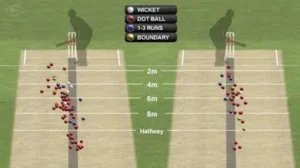
It has international acceptance and popularity demonstrating its significance to contemporary sports refereeing which influences the way cricket matches are played, viewed or analyzed. There are six or more high-performance cameras and special computers installed strategically around the ground that work together at a rate of up to 100 frames per second capturing the movement of a ball and predicts the future path of the ball. By following with unexampled precision each move that happens along its path Hawk-Eye builds up the three-dimensional image of that path. Such an intricate procedure enables Hawk-Eye to forecast correctly where will be traveling next including whether it would strike stumps or not.
Main elements of hawk eye technology in cricket:
Hawk eyes data includes:-
- LBWs
- Wagon Wheel
- Reaction time
- Ball Speeds
Hawk-Eye Technology and the Accuracy of LBW Decision:
LBW decisions are one of the main areas where Hawk-Eye technology in cricket used. Traditionally, these decisions would be made by the umpire without any technology, hence leading to a lot of arguments due to human error. However, this has changed with Hawk-Eye giving umpires exact figures on features such as ball bounce, speed, and direction. This additional information greatly improves the accuracy of decisions thereby dealing with one of the toughest aspects of cricket umpiring
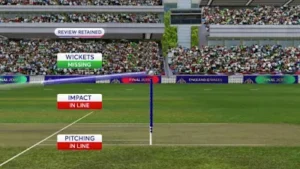
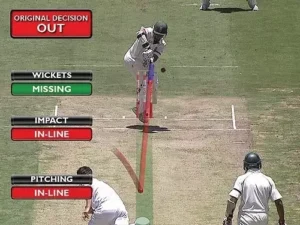
This has even seen Hawk Eye Integrated into the Decision Review System (DRS), which has completely revolutionized cricket umpiring. DRS was introduced in 2008 where teams will be able to challenge decisions made by on-field umpires; a system that is based on rules and regulations. In this case, it plays a crucial role in providing significant information about doubtful decisions. Since then, overall accuracy for Test matches has increased from 91% to more than 96%, and the Decision accuracy in ODI matches improved from 90% to almost 94% due to DRS and Hawkeye technology. underlining the transformative influence of Hawkeye technology on game fairness and integrity.
How Hawk-Eye measures the wagon wheel in cricket:
Hawk-Eye measures the wagon wheel in cricket by tracking the trajectory of each delivery and the subsequent shots played by the batsman. Utilizing multiple high-speed cameras placed strategically around the cricket field, Hawk-Eye captures the movement of the ball from various angles. As the batsman makes contact with the ball, the cameras record the direction and location of each shot played.
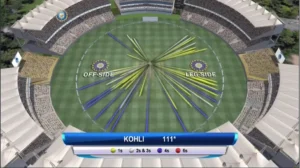
Hawk-Eye’s advanced algorithms then analyze this data to plot the trajectory of the shots on a graphical representation of the cricket field, resembling a wagon wheel. Each shot is depicted on the wheel according to its direction and distance from the batsman, providing a visual overview of where runs have been scored. This detailed analysis helps players, coaches, and viewers understand the batsman’s scoring patterns, strengths, and weaknesses, contributing to strategic decision-making and performance evaluation in cricket.
Measurement of Reaction time in cricket:
Let’s understand how the Hawk Eye measures the reaction time of a catch and shot played by a batsman, Hawk-Eye technology measures reaction time in cricket by using a network of high-speed cameras strategically placed around the stadium. These cameras capture the position of the ball and the player’s actions at up to 1,000 frames per second.
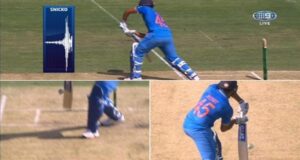
For a catch, the system tracks the ball’s trajectory from the bowler to the batsman’s edge and then to the fielder’s hands, calculating the time taken for the fielder to react and complete the catch. For a shot, Hawk-Eye analyzes the time between the ball leaving the bowler’s hand and the batsman making contact with it. Then display the replay on the big TV screen. It also includes a snickometer to detect the ultraedge. The precise timings are determined by processing the high-speed video data, which provides detailed frame-by-frame analysis. This data helps in understanding the speed and accuracy of player reactions, crucial for performance analysis and coaching.
How hawk eye technology Calculates the speed of ball in cricket:
Hawk-Eye measures speed of the ball using a sophisticated system of high-speed cameras positioned around the cricket field. These cameras capture the path of the ball from the moment it leaves the bowler’s hand to when it reaches the batsman. By taking multiple images every second, Hawk-Eye tracks the trajectory of balls at various points along its flight path.
The system then uses these positions to calculate the ball’s speed. It does this by measuring the distance the ball travels between each frame and dividing it by the time taken to travel that distance. The result is the ball’s speed at different stages of its journey, with the initial speed right after release being the most crucial metric. Hawk-Eye’s accuracy comes from its ability to triangulate the ball’s position in three dimensions, ensuring precise and reliable speed readings that are essential for analyzing a bowler’s performance and technique.
Conclusion:
The inclusion of the Hawk-Eye system in cricket has revolutionized the sport, providing unprecedented accuracy and insight into various aspects of the game. By delivering precise ball tracking data, it enhances the accuracy of umpiring decisions, particularly in contentious situations like LBWs and boundary calls. Additionally, it offers valuable performance analytics for players and coaches, helping them refine techniques and strategies. The integration of Hawk-Eye has not only elevated the standard of play but also increased the transparency and fairness of the game, making it more engaging and enjoyable for fans worldwide.

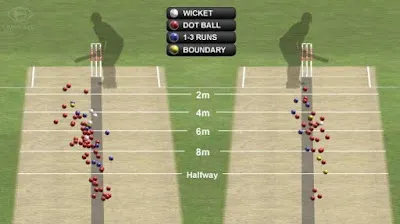
Great work!